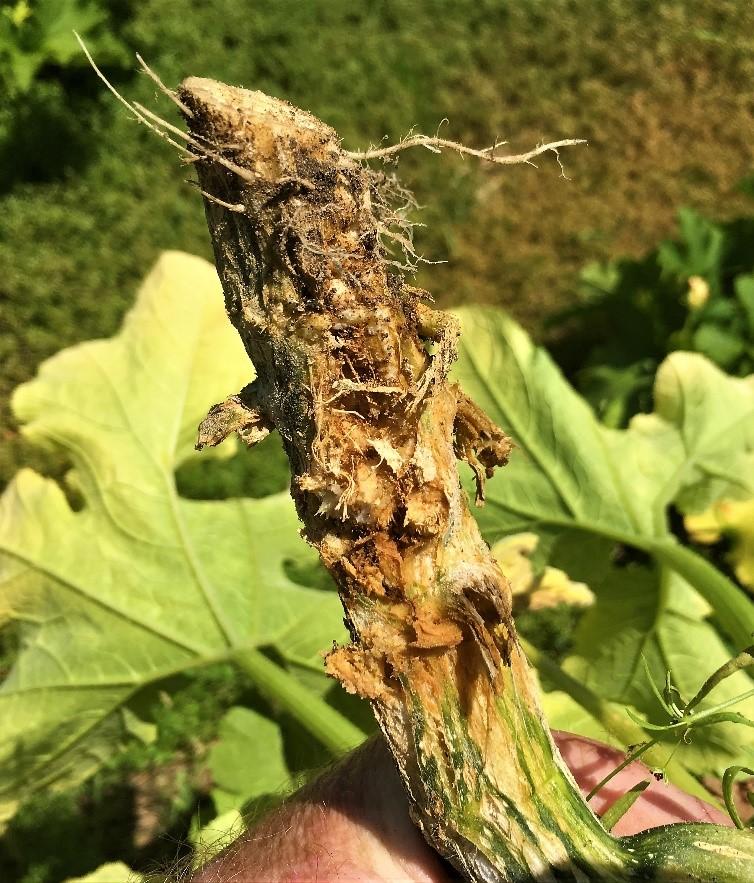Squash Vine Borers and Pumpkins
On a recent visit to a farm I saw bright yellow leaves in a pumpkin field and wondered if this could be Cucurbit yellow vine decline that was first seen two years ago (fig. 1). Upon closer inspection of the plants it was found to be an old nemesis of pumpkins and squash - the squash vine borer. Borer moths lay eggs mostly at the base of pumpkin and squash plants starting in late June and going through the first few weeks of July. Eggs hatch and borers quickly move their way into the base of the pumpkin stem where they feed inside the stem (fig. 2) disrupting water and nutrient flow to the rest of the plant (fig. 3). Insecticide sprays need to be directed to the base of the plant for several weeks. Usually the best method of control is a cultural one - rotation. Squash vine borer overwinter in the same field they fed in. Come next spring and summer they emerge and look for the nearest cucurbit field.
The question is how far away does the next field have to be from this years? In this case the grower rotated to a field that was ¼ mile from their other pumpkin field that was lightly infested the year before with squash vine borer (there are no other pumpkin fields around this farm for at least 3 miles). I know growers often do not have enough land to rotate much further than a ¼ mile. Last year’s field was not plowed or worked over the off-season or this spring so the overwintering pupae survived in large numbers and upon emergence were able to locate this year’s pumpkin field. How much of a yield decrease is not known at this time, but plants with feeding signs at their base were marked and will be followed to harvest to see what the yield reduction is. I guess the bottom line is a ¼ mile is probably not far enough of a rotation from even a lightly infested field and pumpkin fields that had even a light infestation of squash vine borer need to be worked in the fall and spring to destroy as many overwintering squash vine borers as possible.


